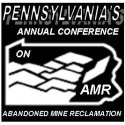Targeted Stream Assessments to Support Sediment Reduction, Habitat Recovery & Watershed Improvement in the Wyoming & Southern Wyoming Valley Final Report to the National Fish and Wildlife Foundation (2024)
See our Story Map on ArcGIS Online
Click here to see it fullscreen
Disclaimer: “The views and conclusions contained in this document are those of the authors and should not be interpreted as representing the opinions or policies of the U.S. Government or the National Fish and Wildlife Foundation and its funding sources. Mention of trade names or commercial products does not constitute their endorsement by the U.S. Government, or the National Fish and Wildlife Foundation or its funding sources.”
“This material is based on work supported by the U.S. Environmental Protection Agency (Assistance Agreement No. CB96358101) and the National Fish and Wildlife Foundation’s Chesapeake Bay Stewardship Fund, which promotes community-based efforts to develop conservation strategies to protect and restore the diverse natural resources of the Chesapeake Bay.”
Download the report from the links below. Most of the PDF documents are less than 5MB unless indicated.
Table of Contents and Executive Summary
Chapter 1 Overall Context Southern Wyoming Valley Small Watershed Grant Plan
Chapter 2 American Black Duck Habitat
Chapter 3 Eastern Brook Trout (EBT) Southern Wyoming Valley
Chapter 5 Habitat Data in the Southern Wyoming Valley
Chapter 6 Habitat Recommendations
Appendices
Additional Anthracite Mining History
Nanticoke Creek Reconnaissance
Newport, Warrior & Espy Watersheds Reconnaissance
Historic Newport & Nanticoke AMD Sampling
Reclaimed Abandoned Mine Land Inventory System (RAMLIS) Investigations
Quality Assurance Protection Plan (QAPP)











